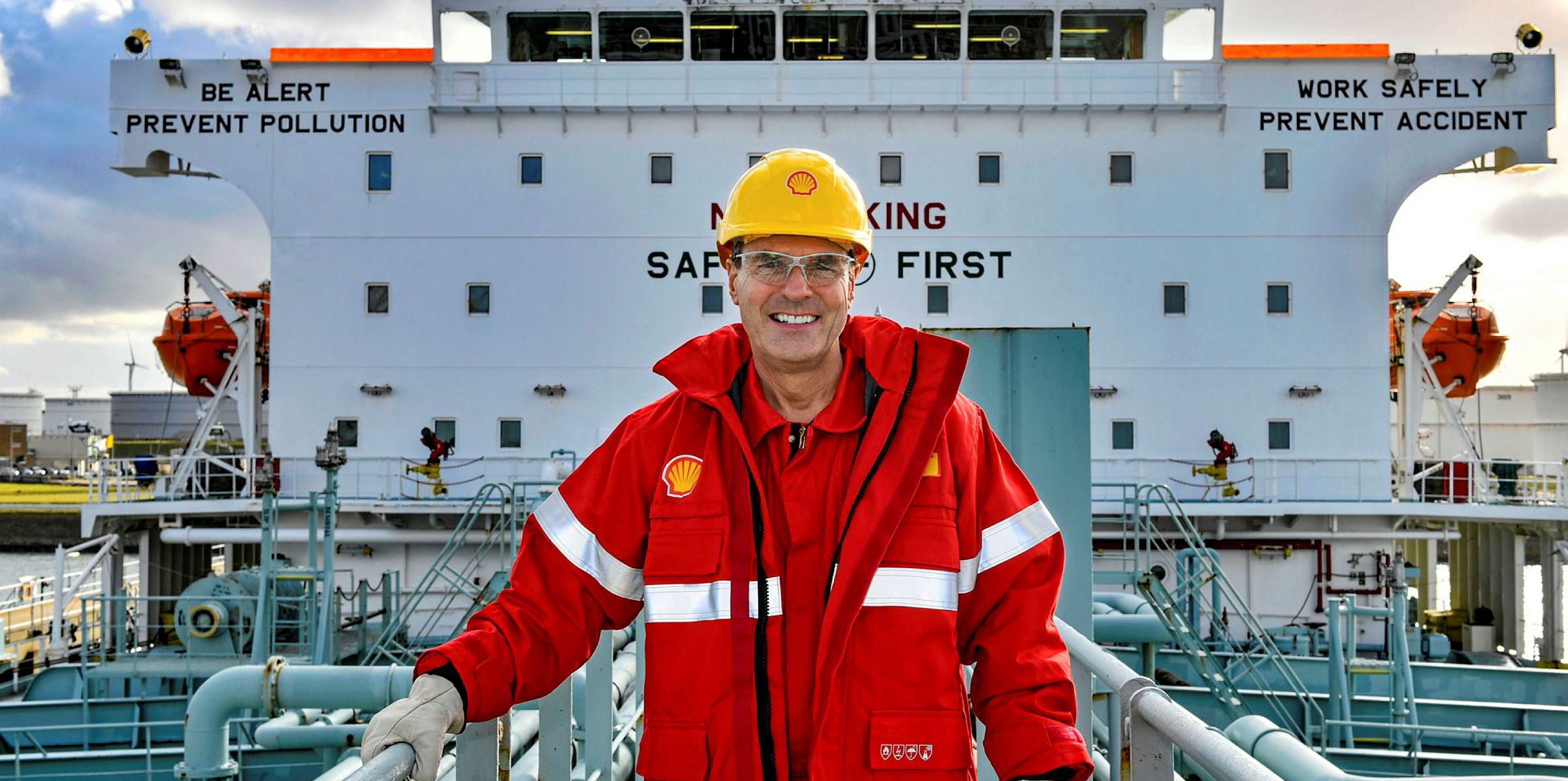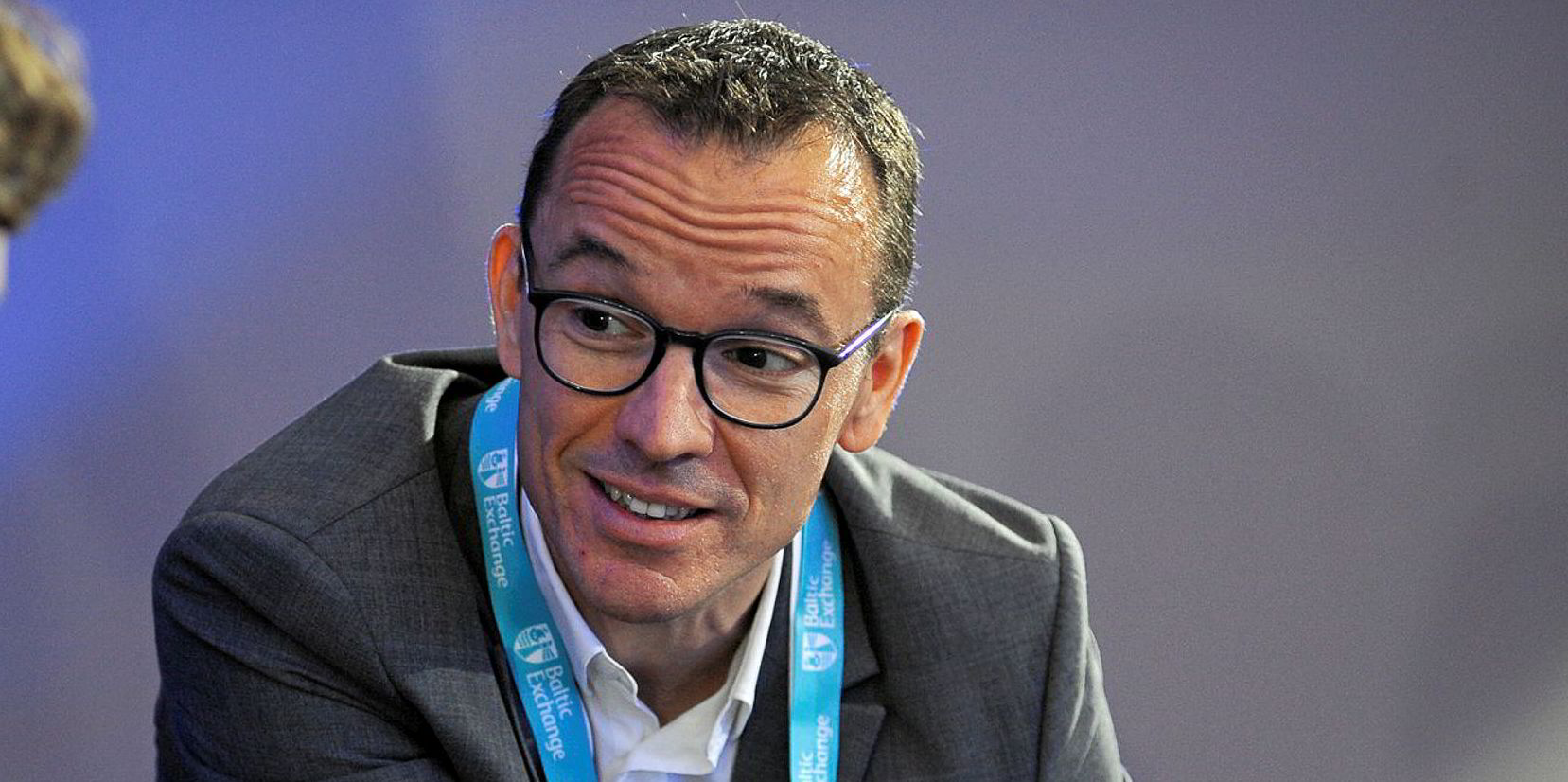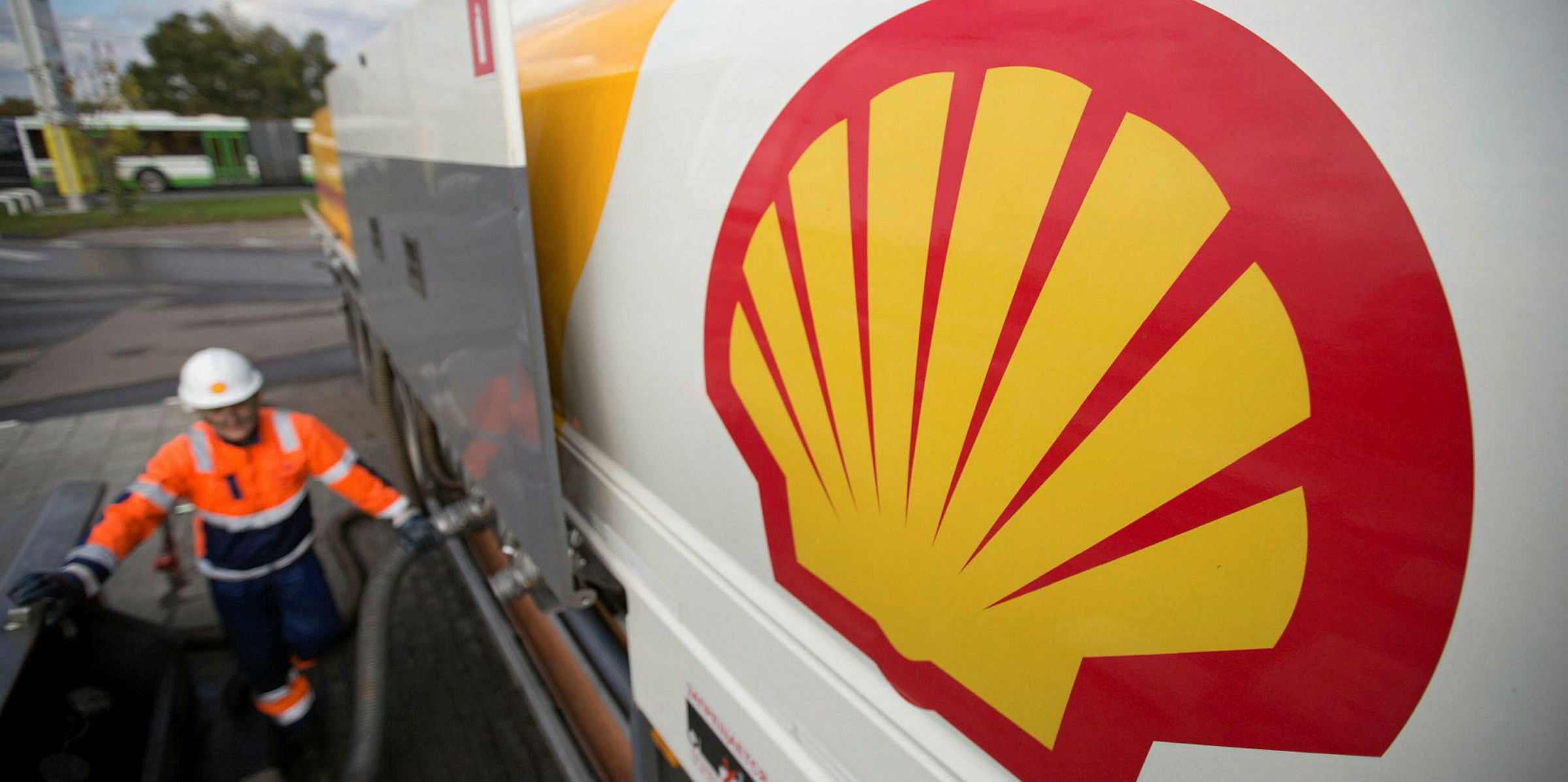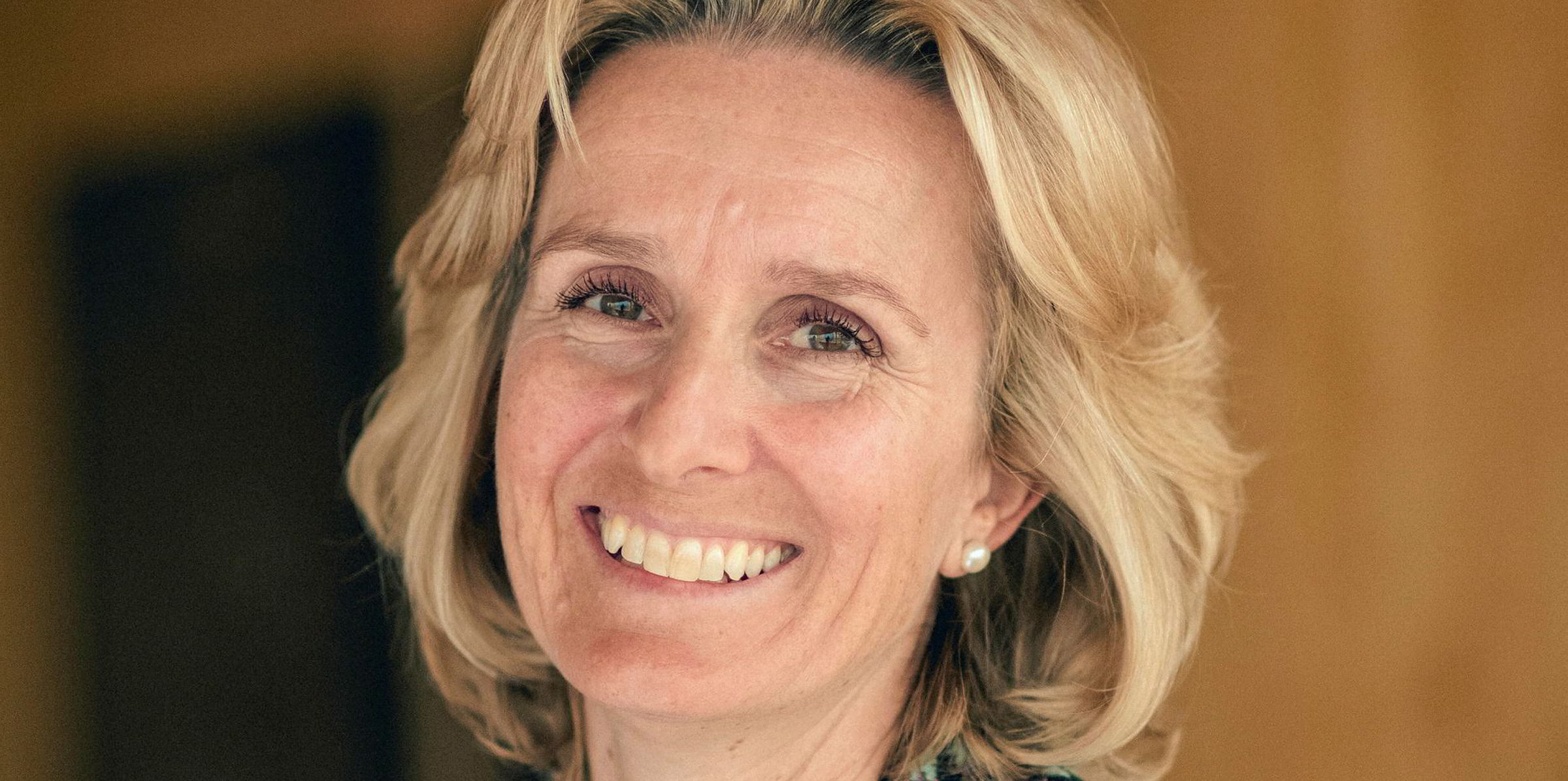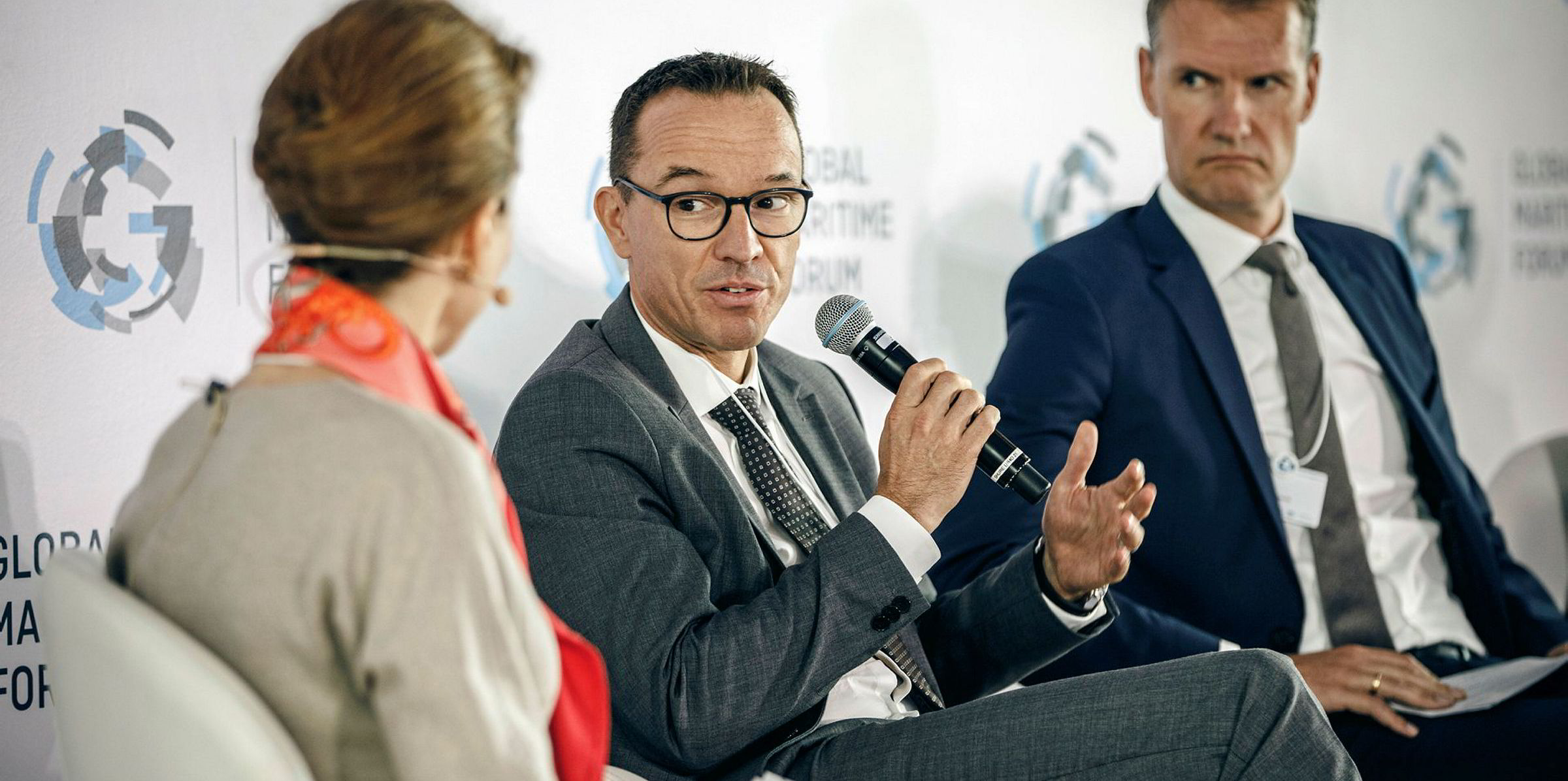Shell is trying to kick-start shipping’s early moves towards decarbonisation by sketching out solutions that would see the industry working together with its end-customers and other sectors competing for the same new fuels.
The Anglo-Dutch energy major revealed its plans in a 47-page report released on Tuesday called “Decarbonising Shipping: All Hands on Deck”.
The document is based on a series of interviews and workshops with 82 shipping leaders conducted by Deloitte across sectors including shipowning, chartering, port, technology, regulatory and finance.
The report attempts to sketch out a road map for shipping to meet the IMO’s emissions reductions targets, identifying 12 solutions that are grouped into four phases covering the next three years, the period to 2030 and the longer term.
Ambition
In a forward, Shell downstream director Huibert Vigeveno said that as an operator of tankers and a supplier of marine fuels, lubricants and services, Shell has a stake in the future of shipping.
“We have announced our own ambition to be a net-zero emissions energy business by 2050 or sooner, in step with society, and our shipping operations must be part of this,” he wrote.
Speaking to TradeWinds, Shell shipping and maritime vice president Grahaeme Henderson stressed that the aim was not to give Shell’s views but to produce an independent report that is a collective vision of the industry’s thinking and the drivers for moving forward.
But he said it is also for Shell’s own use.
“We are really pleased with it and we believe this can help Shell and others,” the executive said.
Henderson, a vocal advocate for safety in shipping, said it is not about one company doing one thing but it is about everybody working together in a bigger way than the industry has ever done before.
Unlock
The report maps out an “unlock” phase for the industry to pursue over the next three years.
This would involve trying to boost end-customer demand for zero emissions shipping, achieve global regulatory alignment, scale up pilot projects by cross-industry collaboration and working with other sectors outside shipping while continuing moves towards operational efficiencies.
We have announced our own ambition to be a net-zero emissions energy business by 2050 or sooner, in step with society, and our shipping operations must be part of this
Shell downstream director Huibert Vigeveno
Henderson does see challenges.
He said that, as an industry, shipping is not used to working together on collaboration at this scale, instead preferring to stick to areas of expertise. But he believes it can also learn from other industries on how they are working together, their experience of the next generation of fuels and the infrastructure for them.
By working with sectors such as aviation and road transport, he said there could be a combined usage for new fuels such as ammonia and hydrogen.
He agreed that there are already good pilot projects, and research and development underway. But he said this is not happening industry wide.
He said what is needed is a more in-depth understanding of what the blockers are and how to accelerate these efforts.
End users
Henderson said the industry also needs to extend its collaborative efforts right across the value chain, in particular to work with its end-customers whose goods it is shipping and who are becoming increasingly vocal.
“We have been thinking very much as a shipping industry and within our own remit,” he said.
“We are very aware that the end-customer is the one that has a key role to play. At [the] end of [the] day, [it] comes down to cost of consumer goods. We should not under-estimate that the fuel choice may not be ours alone.”
Henderson said Shell has a unique role to play.
“Our customers extend from shipping to shampoo,” he said. "We play that role in understanding our customers' need and one of the things we can do is build that business case which will drive that demand.
“Shell can help this to happen. We are involved in most elements along the whole value chain and we can, I think, be a key player.”
Future fuels
On future fuels, Henderson said Shell is looking at hydrogen, ammonia and fuel cells — a vision that could also bring in LNG.
He said each of these has challenges in how they are generated, their energy density and costs — and it is unlikely they will be available in large amounts by 2030.
He added that a change out of the deepsea fleet could take up to 30 years.
"LNG can make a difference and quickly," Henderson said, flagging up its 20% to 30% reduction in CO2, which coupled with reductions of up to 40% from efficiency technologies gets companies closer to the emissions targets.
"We certainly see a strong place for LNG right the way through the next 30 years, maybe more," he said, describing it as cost effective, available and a fuel that Shell understands.
"Put all this together and it is a very good solution."
| Unlock phase: 2020-2023 | Accelerate phase: 2023-2030 | Scale phase: first net zero vessels enter commercial fleet by 2030 | Foundation phase: to run throughout |
| 1. Scale-up customer demand | 6. Flexible and modular designs | 10. Scale-up fuel production | 12. Operational efficiency |
| 2. Global regulatory alignment | 7. Port coalitions | 11. Scale-up bunkering infrastructure | |
| 3. Cross-sector R&D | 8. Investor pressure | ||
| 4. Scale-up controlled pilot projects | 9. Green finance | ||
| 5. Coordinated industry commitments |
